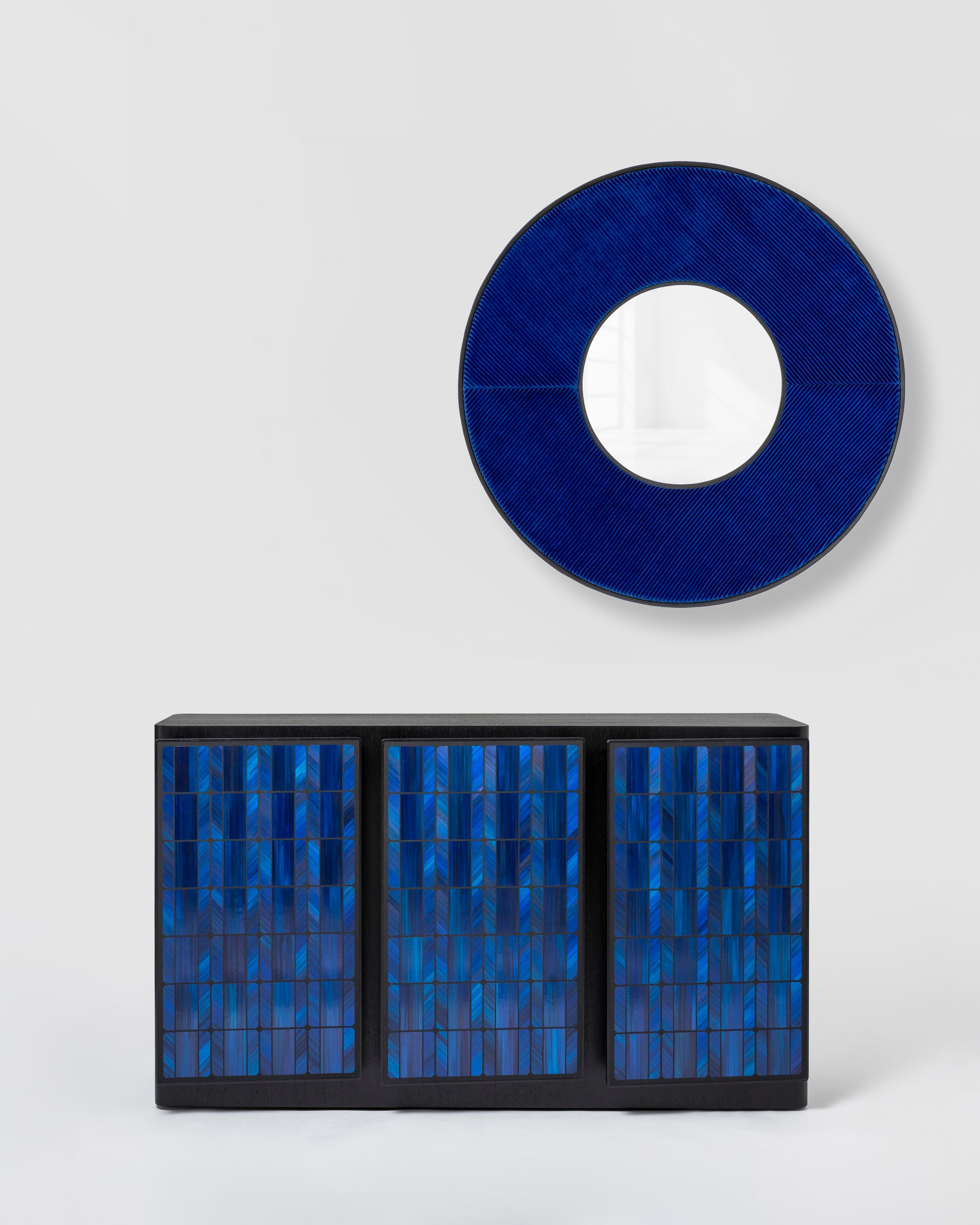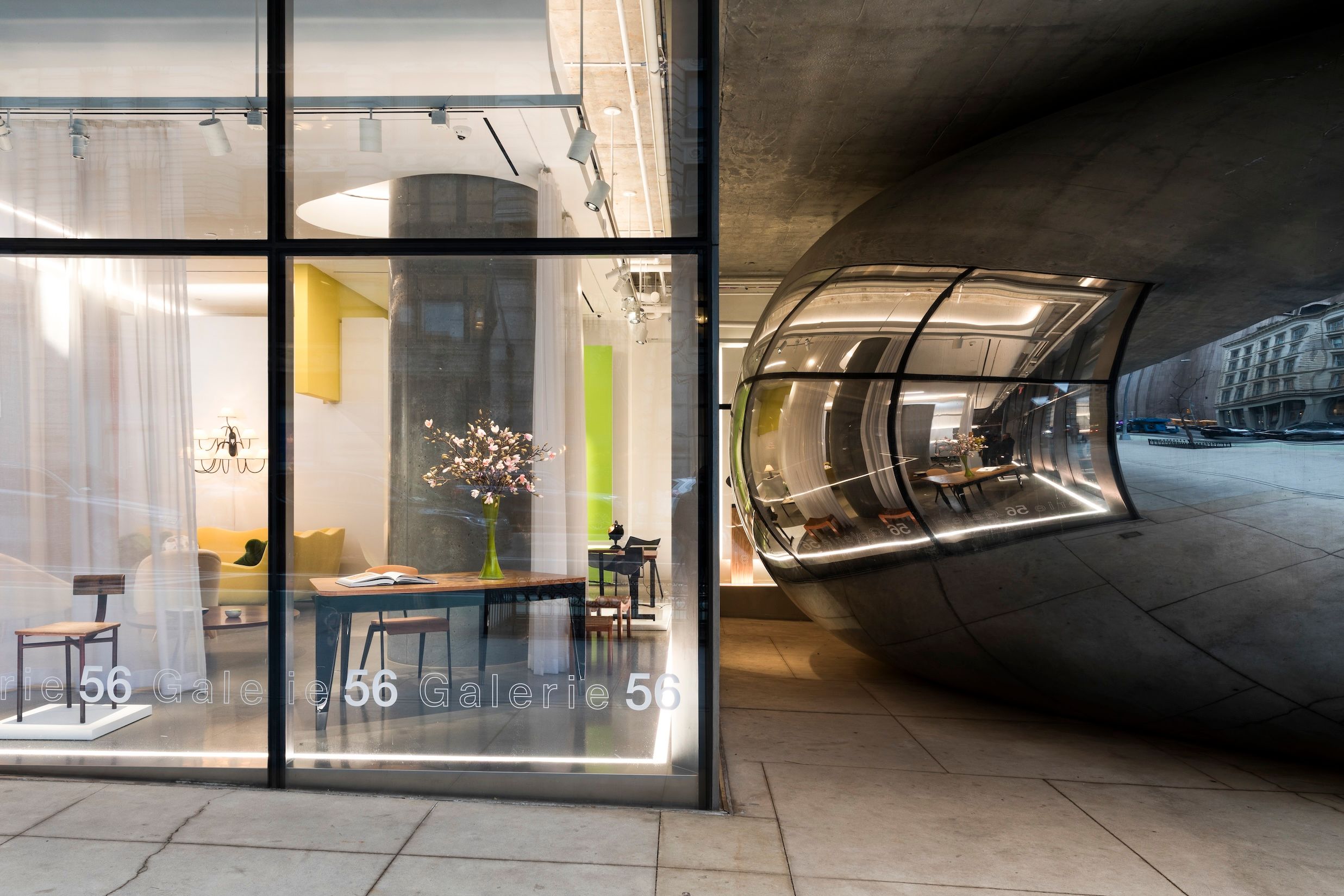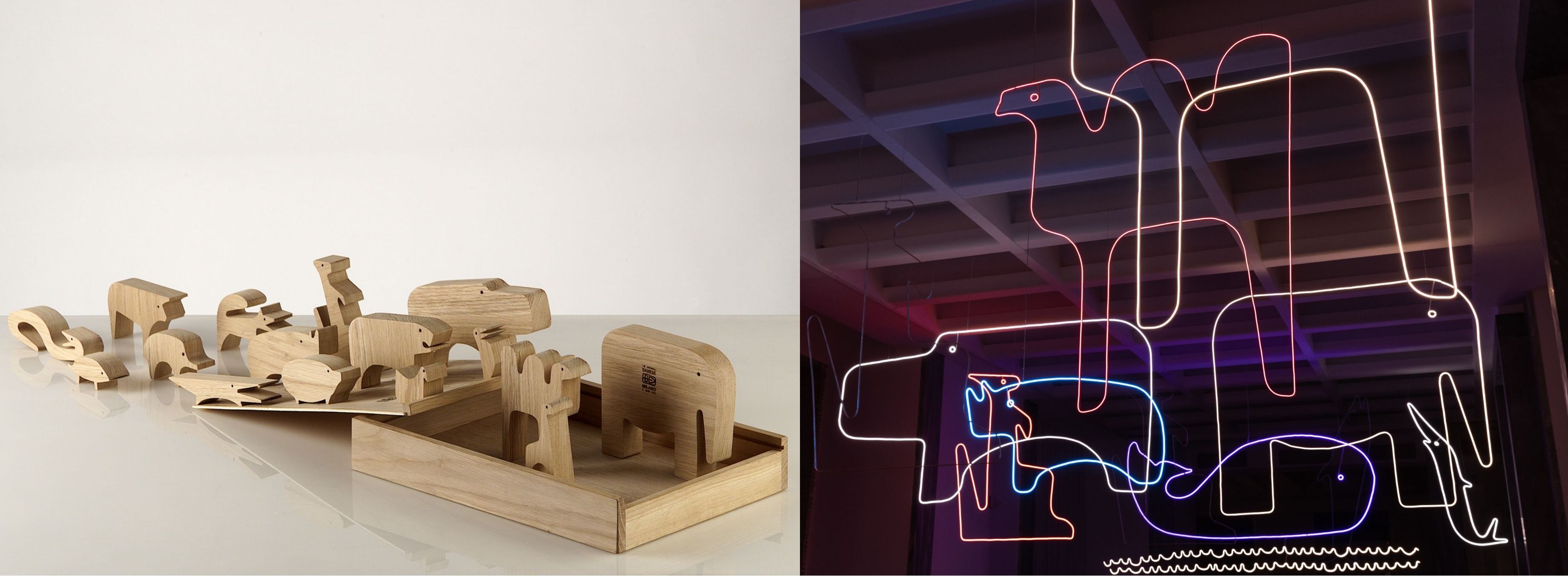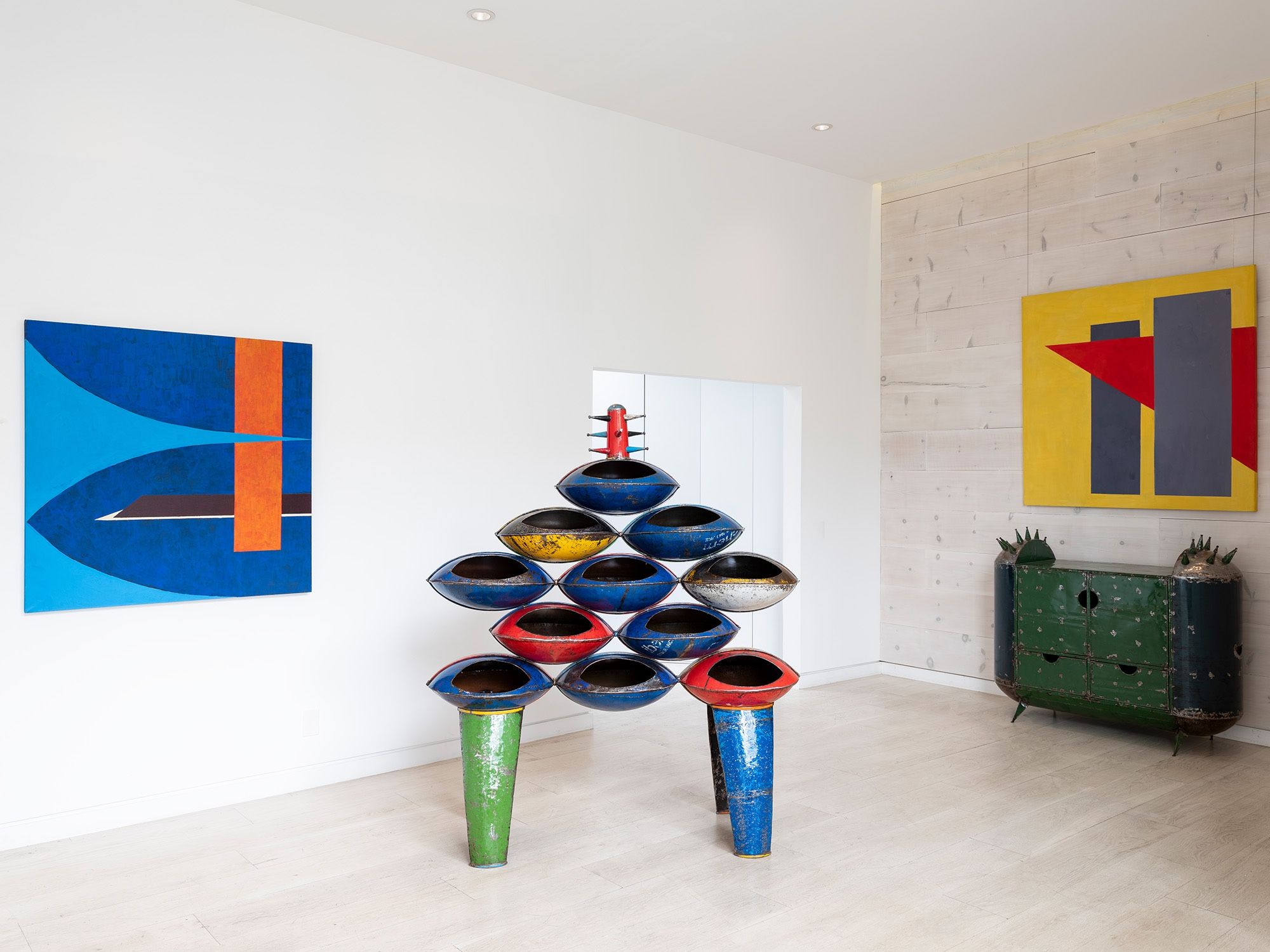IN THE MIX MARCH 1 2024
by Design Miami
Design Miami’s monthly, can’t-miss roundup of design world news and inspiration

CHARLES AND RAY EAMES' SOLAR DO-NOTHING MACHINE (1957), INCLUDED IN TRANSFORM! DESIGNING THE FUTURE OF ENERGY AT VITRA DESIGN MUSEUM
Photo © Eames Office / LLC
Welcome to The Buzz, our monthly roundup of design world news and inspiration for Design Miami’s discerning community of creatives and collectors. Enjoy!

ALUMINUM BENCH BY ESTÚDIO CAMPANA
Photo by Fernando Laszlo; Courtesy of Friedman Benda and Estúdio Campana
This month, Friedman Benda in New York launches On the Road, Estúdio Campana’s fifth solo show at the gallery and the first with Humberto Campana as sole principal designer, following the passing of his brother Fernando. On the Road is the first in a planned series of exhibitions and inaugurations recognizing the studio’s 40th year anniversary.
The show opens a new chapter, marked in part by Campana’s desire to reconnect with nature and spirituality, as well as a return to the origins of the studio’s earliest, groundbreaking designs, made with local raw materials, and a renewed dedication to his long term mission to restore native forests in his hometown of Brotas. The resulting, lyrical works are composed in a range of materials—humble adobe, off-cut aluminum, local Jequitibá wood, and more. Not to be missed. March 7-April 20
“We learn from the materials; they tell us what forms they should take.”
– Estúdio Campana

KEEPING THINGS TO MYSELF CHAIR (2023) BY BARBORA ŽILINSKAITĖ
Photo by Timothy Doyon; Courtesy of Friedman Benda and Barbora Žilinskaitė
Meanwhile, in LA, Friedman Benda presents Chairs Don’t Cry, Lithuanian designer Barbora Žilinskaitė’s inaugural solo exhibition. Žilinskaitė investigates the relationships between objects and their owners, questioning human-centered worldviews and consumption habits. Aiming to create bridges between people and things, she crafts figurative forms in inviting colors composed of experimental materials—such as reclaimed sawdust—to encourage users to relate to her objects as if they were entering into a dialogue between two equal parties. Til March 30

XTU ARCHITECTS, X_LAND, RENDERING (2020)
Photo © XTU Architects
At Vitra Design Museum in Weil am Rhein, Transform! Designing the Future of Energy considers the key role that design plays in the current transition to renewable energy. The exhibition shines a light on the transformation of the energy sector from the perspective of design: from everyday products that use renewable energy to the design of solar houses and wind power stations; from smart mobility systems to futuristic visions of self-sufficient cities. It considers: What are the criteria for designing an energy-efficient product? How can design contribute to an increase in the use of renewable energy sources? And how can industry, government policies, and every one of us help to achieve the transition to a sustainable future? March 23-September 1

JEAN-BAPTISTE FASTREZ'S SOLAR STORAGE AND MERCURY MIRROR
Photo © Alexandra de Cossette; Courtesy Galerie kreo
In Paris, Galerie kreo hosts Space Craft, its first solo exhibition celebrating designer Jean-Baptiste Fastrez. The new furniture ensemble merges traditional craftsmanship techniques with a techno-futurist aesthetic—wherein straw marquetry, for example, floats along happily with new metallic finishes. The provocative title, juxtaposing “space” and “craft,” offers a sense of the designer’s aim: to create exceptionally crafted furniture in tune with our (postmodern) epoch. On view until April 15

LEFT: MALITTE LOUNGE FURNITURE (1966) BY ROBERTO MATTA. MANUFACTURER: GAVINA, ITALY. THE MUSEUM OF MODERN ART, NEW YORK. GIFT OF KNOLL INTERNATIONAL. RIGHT: BOWL CHAIR (1951) BY LINA BO BARDI. THE MUSEUM OF MODERN ART, NEW YORK. COMMITTEE ON ARCHITECTURE AND DESIGN FUNDS.
Left: © 2024 Artists Rights Society (ARS), New York / ADAGP, Paris. Right: Digital image © 2024 The Museum of Modern Art, New York
This month, New York’s MoMA opens Crafting Modernity: Design in Latin America, 1940–1980, a major exhibition spotlighting the region’s rich design landscape. The show focuses on six countries—Argentina, Brazil, Chile, Colombia, Mexico, and Venezuela—credited with spearheading the development of modern domestic design in Latin America. Through more than 100 works, including furniture, graphic design, textiles, ceramics, and photography, Crafting Modernity will explore how design reflects larger political, social, and cultural transformations in the region in a period of dramatic transformation characterized by rapid modernization and economic growth. The exhibition is organized by Ana Elena Mallet, guest curator, with Amanda Forment, Curatorial Assistant, Department of Architecture and Design, The Museum of Modern Art. March 8 – September 22
“With this exhibition, we hope to introduce audiences to the ways in which the field of design in Latin America… reflects the multivalent and complex visions of modernity taking place in the region. Through the study of objects, material culture, and other forms of expression, a more nuanced vision of Latin America can emerge.”
—Ana Elena Mallet, Curator

NAMORADEIRA CONVERSATION SEAT BY JOSE ZANINE CALDAS (1965)
Courtesy of Carpenters Workshop Gallery
Coinciding with Crafting Modernity at MoMA, Carpenters Workshop Gallery in New York presents Turning Tides: Designing a Modern Brazil. The exhibition traces Brazilian design from the 1940s to today, paying tribute to the country’s design legacy through works by the likes of Joaquim Tenreiro, Sergio Rodrigues, Zanine Caldas, the Campana Brothers, and more. As Maria Cecilia Loschiavo, art advisor for the exhibition explains, “Turning Tides presents the fabric for modern living in Brazil. The public will see the various trends, the avant-garde and the diversity of materials used, but also the sovereign presence of wood, which establishes the designers’ link with vernacular culture and the beginnings of Brazilian furniture.” On view March 7-May 1

MULLER VAN SEVERIN'S INSTALLATION S, PART OF THE FUTURE PRIMITIVES SERIES, AND CHAIR 2, MADE FOR THE BAHRAIN PAVILION AT THE WORLD EXPO 2015 IN MILAN.
Photo by Frederik Vercruysse
Later this month, Fondation CAB in Saint-Paul-de-Vence, France launches an exhibition spotlighting the work of acclaimed Belgian design duo Muller Van Severen. The show will feature a selection of the pair’s work from the past 12 years alongside photography by another creative duo, Scheltens and Abbenes, that focuses on Muller Van Severen’s prototypes, drawings, and more, offering an intimate look at the studio’s creative world. On view March 21st - October 27th

FACADE BY ASTRID KROGH
Photo by Hovhannes Asvadurov; Courtesy of Hostler Burrows
Now showing: In LA, Hostler Burrows hosts Arabesque, Danish artist Astrid Krogh's first US solo show. Krogh is known for creating large-scale textiles and light-based public installations that delve into the microscopic structures of biological life and the elusive organization of the universe. For Arabesque, Krogh has designed a botanical metalwork tapestry inspired by the form of taraxacum (the common dandelion), a hardy and undomesticated plant species endemic to the cracked pavement and urban landscape of cities like Los Angeles. Cut from sheets of aluminum, the silhouettes of serrated leaves and puffball heads are overlaid on the building’s brick facade. Inside, guests can enjoy a variety of works—ranging from an ironwork arabesque to photographic prints—that consider the beauty and genius of the natural world. Til April 4

SHOZO MICHIKAWA'S VOLCANO USU, KOHIKI, AND SHINO SCULPTURAL FORMS
Photo by Joe Kramm; Courtesy of HB381
Meanwhile, at Hostler Burrows’ Tribeca outpost, HB381, all eyes are on Japanese ceramicist Shozo Michikawa’s latest expressive, gestural sculptures. The Inbetween features works inspired by the artist’s memories of a major volcanic event in 1977 on Japan’s northernmost island of Hokkaidō. The active volcano Mount Usu erupted four times in just three days, and columns of white ash rose to ten kilometers in height, traversing the troposphere, inundating the stratosphere—and the landscape was redefined. Michikawa has transmuted memories of nature’s force and potential for sudden rupture via a series of twisted, torqued, and rough-hewn sculptures. The work initiates a dialogue with the traditions of Japanese ceramics, welcoming imperfection, distortion, and the creation of fault lines within the surfaces of hand-thrown vessels. March 8 - April 27

LES ENFANTS TERRIBLES AT NEW YORK'S GALERIE56
Photography by Antoine Bootz
In New York, Galerie56 and Galerie Jacques Lacoste present Les Enfants Terrible, a Jean Cocteau-inspired exhibition of 20th century French furniture. The show highlights creatives whose work changed the course of 20th-century decorative arts between the latter half of the 1920s and the tail-end of the 1950s. Named after Cocteau’s 1929 novel, the exhibition also references the 1950 cinematic adaptation of the book—a collaboration between Cocteau and French filmmaker Jean-Pierre Melville—and the friendship that blossomed between the two. At the same time, Les Enfants Terribles also celebrates the creative rapport between Mindel and Lacoste. Mindel remarks, “Jacques and I share an ingrained affinity for design and design history. We were thrilled to join forces on this project to cast a spotlight on the work of the ‘holy terrors’—the architects, designers, decorators, and artists who profoundly altered the course of decorative arts during this specific period in France.”
Les Enfants Terribles highlights pieces by Pierre Chareau, Eileen Gray, Paul Dupré-Lafon, Jean Luce, Jean Royère, Jean Prouvé, Charlotte Perriand, Le Corbusier, Serge Mouille, Max Ingrand, Georges Jouve, Alexandre Noll, Mathieu Matégot, Denise Gatard, Maria Pergay, and Pierre Jeanneret, in addition to sculptures by Antoine Poncet. The show is on view until April 19 at Galerie56.

ENZO MARI'S 16 ANIMALS PUZZLE FOR DANESE MILANO (1957) AND LO ZOO DI ENZO BY NANDA VIGO (2020).
Left: Photo Federico Villa. Right: © Triennale Milano; Photo by Gianluca Di Ioia.
Finally, later this month, London’s Design Museum opens the first ever UK museum exhibition devoted to late, legendary Italian designer Enzo Mari. Following a successful iteration at the Triennale Milano, this large-scale retrospective spotlights Mari’s prolific 60 year career. Featuring over 300 objects—ranging from furniture, graphics, and product design to conceptual installation-based works, as well as Mari’s celebrated children’s books and games—the exhibition spans his work as a designer, artist, teacher, critic, and theorist, while highlighting his enduring influence. The show is co-curated by Mari’s friend and collaborator, and artistic director of Serpentine, Hans Ulrich Obrist, with Francesca Giacomelli, Mari's studio project assistant, designer, curator and researcher. March 29-September 8


